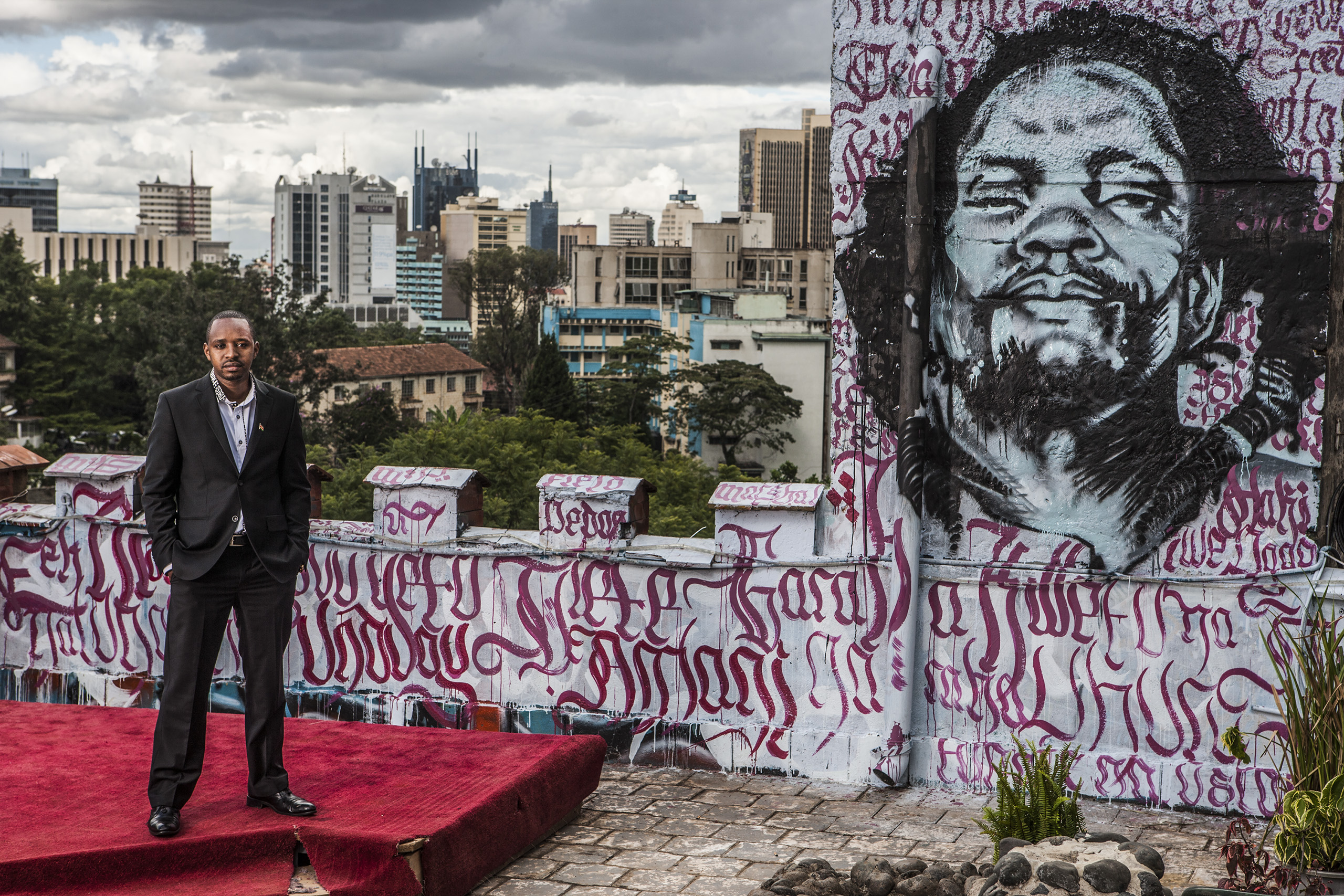Boniface Mwangi is stretched out on his sofa with one arm flung over his eyes. He is snoring. The former photojournalist turned social activist has a lot on his plate and he’s grabbing some sleep while he can. Mwangi has not only been preparing for an impending visit by U.S. Secretary of State John Kerry to his artists’ collective in central Nairobi, he also has an upcoming photo competition to judge, calls from the competition’s sponsor Canon to field and graffiti artists seeking counsel for their next political action.
The swirl of activity may exhaust Mwangi, 31, but it’s all of his own making. In 2008, Mwangi was working as a photojournalist and earned international accolades for his coverage of Kenya’s violent postelection riots, but almost as soon as he found success as a photographer, Mwangi felt frustrated: documenting the failures of Kenyan government and society was not enough to bring about the change he wanted to see in his country.
For that, he realized, he needed to be more proactive about starting a national conversation about greed, corruption and government impunity, ills he considered endemic to Kenyan political culture. So he turned to street art. He started by setting up guerrilla galleries in public spaces around the country, displaying there his 2008 photographs—of hands cut off by mobs allied to one candidate or another, of charred bodies torched in two months of violence that saw about 1,200 killed. The goal: to launch a discussion about election violence and accountable leadership before Kenyans returned to the polls five years later. “In a world where you need to communicate very, very fast, the best way to do that is art,” he says.

In November 2011 he drafted a team of young journalists, artists and activists to start a collective named Pawa254. Their first action, in February 2012, was a Nairobi-wide graffiti campaign that portrayed Kenya’s leaders as vultures preying on helpless citizens. The government quickly erased the murals, but not before they were picked up by local and international media and adopted as symbols of the political class’s abuse of power.
Pawa254—the name is a combination of Swahili slang for power and Kenya’s international dialing code—is both a movement and a gathering and performance space. The group is made up of photographers, journalists, musicians, filmmakers and other artists united in their mission to help Kenyans heal ethnic and religious divides, push for better governance and solve social problems, from slum violence to homophobia. Pawa254’s exploits have included sending pigs to parliament in protest against lawmakers’ demands for higher salaries (the parliamentarians eventually backed down and ended up taking a pay cut). Pawa254’s grant and studio-residency program, which helps disadvantaged youth hone their artistic talents, prompted Kerry’s visit as part of a trip to Kenya in May.
For amateur photographer Edwin Gichuhi, 29, who started working with Pawa254 two years ago, Mwangi’s greatest strength is his ability to spot, and shape, potential. “I have seen people walk in here with no idea what their talents are. The next thing you know, they are starring in a hip-hop video that talks about ending corruption. And Kenyans are listening.” For Mwangi, that’s just the beginning.
- Donald Trump Is TIME's 2024 Person of the Year
- TIME’s Top 10 Photos of 2024
- Why Gen Z Is Drinking Less
- The Best Movies About Cooking
- Why Is Anxiety Worse at Night?
- A Head-to-Toe Guide to Treating Dry Skin
- Why Street Cats Are Taking Over Urban Neighborhoods
- Column: Jimmy Carter’s Global Legacy Was Moral Clarity